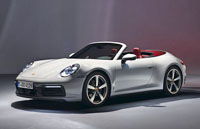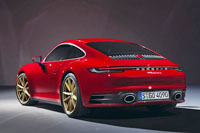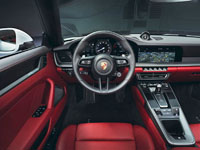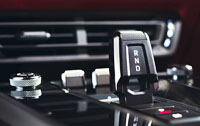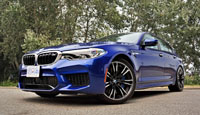
If someone were to ask you to name a serious sport sedan a few will probably come to mind in an instant. At the lower end of the four-door performance spectrum the VW GLI and Subaru WRX might immediately come to mind, but within premium circles BMW has been the go-to, go-fast brand for longer than any competitor this side of Maserati, and ‘60s era Quattroportes were astronomically priced. It was BMW that brought super-sedan performance to the masses, with the M5 initiating the entire category.
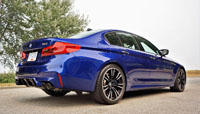
Sadly I’ve never owned an M5, although I came mighty close to purchasing a mid-‘90s E34 back in ’96. It was beautiful, brilliantly quick, and garnered near-exotic levels of respect amongst those who knew. These days the M5 is legend, with no one questioning why you’d want sports car performance in mid-size five-seater. Now that I’m thinking of it, the world we live in now seems to revere high-end sport sedans as if they were supercars, with most buyers in this class gravitating to taller super-SUVs like BMW’s own X5 M and X6 M.
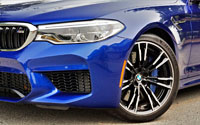
As fabulous as BMW’s sportiest crossovers may be, I’ll take an M5 any day of the week. As it is, I’ve owned everything from a mid-‘70s Bavaria to a late-‘80s E34 525i and plenty of roundel-badged models in between, with none as entertaining as any M5, but fortunately I’ve been able to spend weeks at a time in BMW’s best sport sedan since the fabulous V8-powered E39 arrived on the scene, and must admit the Bavarians certainly know how to make a big four-door sedan move down the road quickly.
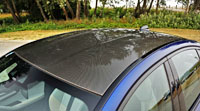
Looking back, the M5 first mentioned made a mere 340 horsepower, which seemed unfathomable when compared to the first M5’s 256 hp, but if lined up beside the comparatively otherworldly 600-plus horsepower M5 available now, it might as well have been a Camry (said with respect to Toyota’s impressive new Camry TRD). The 2020 M5 hits 100 km/h from standstill in a blisteringly quick 3.4 seconds, although if that’s not quite fast enough a Competition model will knock another 0.1 second off the clock for a 3.3-second sprint to the same speed. Either time makes it fastest amongst every direct competitor.
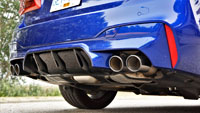
It takes more than mere straight-line speed to make a full-fledged sport sedan, of course, but fortunately the M5 earned its legendary status by managing corners with adroit agility, and the new model is no exception to the accepted rule. In fact, it feels easier than the previous F10-bodied M5 to fling through corners, albeit not quite as light and tossable as the now classic E39 referred to earlier. The now standard carbon fibre roof panel slices about 45 kilos (100 lbs) from the very top of the car, helping to lower its centre of gravity, while the car’s rear-biased all-wheel drive does more than just help out on slippery road conditions, making even drying pavement more controllable.
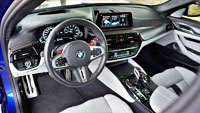
Likewise, the new F90 M5’s eight-speed gearbox shifts a helluvalot faster than you might expect from a conventional automatic, but if you want it to perform its duties even quicker, bright red “M1” and “M2” buttons on the steering wheel spokes can instantly trigger pre-set sport modes as well as personalized settings for your specific driving style. For instance, I was able to combine a more compliant suspension setup mixed with quicker shifts and higher engine revs for the M1 position, ideal for zipping down bumpy backroads that would cause a stiffer setup to be airborne more often than optimal, while I set the M2 switch for a more firmly sprung suspension with even faster D3 shifting speed, not to mention the DSC system turned off, perfect for smooth stretches of asphalt. The two buttons allowed me to immediately switch between settings as smoother or rougher sections of pavement approached, necessary for making time on the patchwork quilt of backcountry roads in my area.
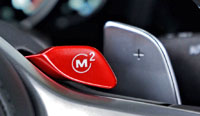
During my various performance tests, I never attempted to prove the M5’s 305 km/h (190 mph) top speed, as you may have guessed, this more of a bragging right than anything potentially possible on Canadian roads or even any publicly available tracks I know of, but suffice to say it’s more than capable of shredding your license if you try anything so silly. I’m more about straightening ribbons of circuitous two-laners anyway, something the M5 executed with greater ease than anything so luxuriously appointed, accommodatingly sized, and accordingly hefty should be capable of. Fortunately, along with the speed this Bimmer delivers a wonderfully comfortable ride and superb refinement, especially when it came to blocking out wind and road noise.
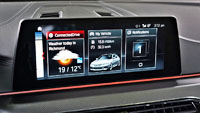
Don’t worry, plenty of delectable sound emanated from ahead of the firewall (as well as the audio system’s speakers, artificially), the turbo-V8 never letting my ears mistake it for one of the car’s less potent sixes, yet when not pushing it for all it was worth the serene cabin allowed for full enjoyment of the just-noted 16-speaker, 1,400-watt, 10-amplified-channel Bowers and Wilkins surround sound audio system, even more impressive when turned down for calmer, ambient pieces as when cranked up.
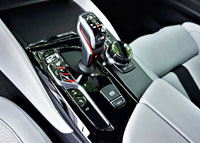
Speaking of a fully engaged experience, the new M5 features a fully digital gauge cluster, albeit wrapped up in an analogue design. To achieve this, BMW encircles the tachometer and speedometer displays with beautiful aluminum rings, and while this doesn’t allow navigation map, per se, to completely cover the screen, does provide a unique look with an amply large multi-info display at centre. The MID is filled with utile functions, all controllable via steering wheel switchgear, while the cluster’s graphics and resolution quality is superb.
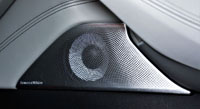
Looking to the right, the centre-mounted infotainment touchscreen is excellent, although be forewarned it gets better for the new 2021 model, increasing in size by more than two inches for a new diameter of 12.3 inches. And yes, it’s a touchscreen, thus providing the usual smartphone- and tablet-like finger gesture controls. Still, BMW lets those who’d rather control its iDrive system with easier-to-reach lower console-mounted switchgear do so, a spin of a rotating dial or the press of nearby quick-access buttons often preferable to tapping, swiping or pinching.
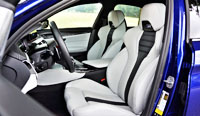
Also important, the BMW delivers one of the best quality cabins in the M5’s super-sedan class too, thanks to high-end materials and impressive attention to detail. The aforementioned Bowers and Wilkins audio system featured gorgeous aluminum speaker grilles, these combined with no shortage of beautiful metalwork elsewhere in the interior. Some accents were finished in brushed aluminum while others glistened like chrome, although my favourite upgrades were the high-gloss carbon-fibre surface treatments and stunning stitched leatherwork.
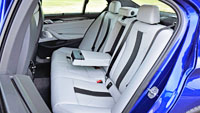
Much of that leather can be found on the M5’s sensational front seats, which were two-tone light grey and charcoal in my tester, with perforated inserts and solid tops on the lower bolsters. Brightly coloured M5 appliques enhance each headrest, a fitting garnish for these comfortable, supportive and fully adjustable buckets, the lower cushions even extendable. Gone are the days that BMW limited rear seating to just two, the accommodating 2020 M5 sporting a wide bench seat with a folding centre armrest housing pop-out cupholders, while detailing in back is as good as that up front. The rear seats can be folded in the optimal 40/20/40 configuration too, allowing long cargo such as skis to fit down the middle while two rear passengers enjoy the more comfortable, heated window seats.
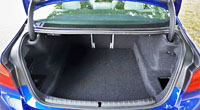
The current M5 has been quite popular over its three-year tenure, much thanks to its eye-catching styling. This said the 2021 will get a refresh that may turn off some lovers of this version, due to a larger more rectangular grille, updated headlamps and taillights, and a few other design tweaks. Those not impressed with the updates should snap a 2020 up while they can, although take note there’s currently no penalty for choosing the 2021. In fact, our 2020 BMW M5 Canada Prices page shows up to $1,500 in additional incentives for both model years. Additionally, make sure to check out how the CarCostCanada system works, and while you’re at it visit the Apple Store or Google Play Store to download our free app, where you can learn about any available financing and leasing deals, manufacturer rebates, and dealer invoice pricing for any car you’re interested in, even while perusing your local dealer’s lot.
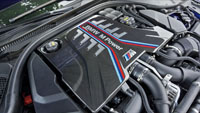
You can get into the 2020 M5 for $115,300 (plus freight and fees) and the more powerful 617 horsepower Competition version for $123,000, whereas the 2021 M5 will only be available in Competition trim, albeit with a slightly less expensive $121,000 listed price. Performance remains the same, which means the M5 blasts into 2021 as one of the quickest four-door sedans available anywhere. That it’s so well built, nicely equipped and easy to live with is just a bonus.
Story and photo credits: Trevor Hofmann
Photo editing: Karen Tuggay

